how we stick to a grocery budget of $130 a week
This website may earn commissions from purchases made through links in this post.
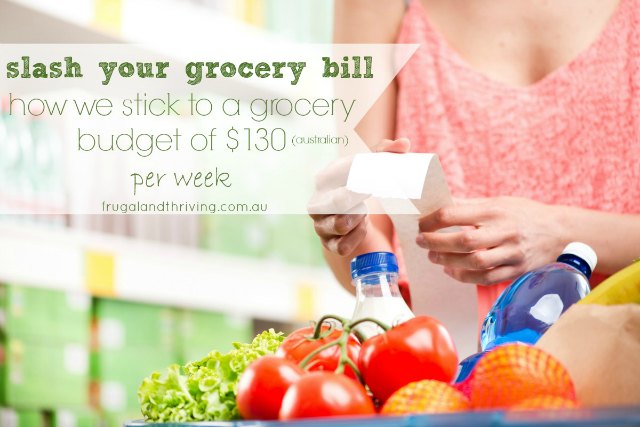
(First written in 2014. Our current grocery budget in 2017 is around $160 a week. Ok, it’s 2022 now, and inflation is high. Our current budget is around $200, but I try to keep it down at $180 per week. The tips help keep your grocery budget as low as possible for your circumstances.)
Slash your weekly grocery budget, feed the family on $200 or less each week without eating rice and beans every night – can it be done?
Can it be done at Aussie prices?
Can you still enjoy things like smoked salmon, brie cheese and 70% dark chocolate?
The answer is yes, yes, yes!
Our average grocery spend each week is around $130 per week (2014). Some weeks it’s more; some weeks, it’s less, but it averages out at $130.
To give you a little context, we’re a family of four with two kids: 4 years old and two years old.
And while we’re not feeding hungry teenage boys (yet), there are times when the kids eat and eat (and eat and eat and eat…).
And that $130 covers food, cleaning, laundry, nighttime nappies…the lot!
I’m not saying anyone should stick to a grocery budget that’s as low as possible. $130 a week is just what we can afford at the moment.
If you buy all organics, or you have voracious teenagers, or you have allergies that need speciality foods, or you’re a family of 10, then your grocery budget is going to be more.
And that’s ok.
The most important thing to aim for is not to spend as little as possible but to buy the best quality groceries that you can afford on your budget.
Buy the best quality groceries that you can afford on your budget.
No more, no less.
Set your budget and work your grocery shop around that. Here are some tips to help you stay within your budget.
12 Ways we Save on Our Weekly Grocery Budget
1. MENU PLAN
Men planning is the foundation on which all other grocery savings are built on. You can shop less, avoid waste, bulk-buy specials, etc. when you plan ahead.
For the more information on how to menu plan, check out the article: how to menu plan easily.


2. SHOP LESS AND STICK TO YOUR LIST
Studies have shown that the more times you go to the store, the more likely you are to come back with impulse buys.
Impulse buys add up. What’s worse, if you haven’t got a plan for how to use those impulse buys, they can go to waste.
If you shop once a fortnight and stick to the grocery list, you created while menu planning, you reduce the temptation to impulse buy.
And when you’re bored and looking for something to do, don’t window shop. Go to the library, go for a hike, go for a swim, meet with a friend, enjoy a hobby instead of shopping.
3. WASTE LESS
Food waste is one of the biggest grocery expense for the average Aussie household. Up to 30% of what we buy goes in the bin. If you spend $200 a week on groceries, that adds up to $3,120 a year straight in the bin.
Save money by only buying what you need and eating what you buy.
Freeze food so that it doesn’t go bad. Use up leftovers. Make stock from the bones.
(Read further: Frugal kitchen hacks that reduce waste).
4. EAT LESS MEAT
If you’re vegan or vegetarian, you’ve got this one covered.
For the cavemen and women among us, this can be a hard tip to swallow.
If it’s any consolation, there’s some evidence that eating lots of meat isn’t all that healthy after all.
What is super healthy is the bones, marrow, cartridge, liver, kidneys, heart, hoofs, blood etc.. These parts of the animal just happen to be cheap as well.
(See: How to Eat Nose to Tail, Even if it Grosses You Out)
To save on meat, we eat small portions of meat, eat chicken, buy the cheaper cuts, have regular meat-free meals and extend the meat we do eat with lots of plant-based protein like veggies and beans, lentils and whole grains.
We buy kangaroo from the supermarket, grass-fed mince and beef and a free-range chook and chicken pieces from Aldi and lamb and pork from the wholesaler.
5. AVOID BREAKFAST CEREALS
Breakfast cereal costs a bomb. I’m always shocked at the price of cereals.
Not only are they expensive, but they’re also full of sugar as well.
Instead in our house, we eat porridge (cooked in the thermal cooker or slow cooker – super easy) with yoghurt, almonds and seasonal fruit; soaked oats or bircher muesli; eggs on toast with mushrooms, tomato and spinach; breakfast burritos with bacon, eggs, mushrooms, rocket and BBQ sauce or pancakes.
Breakfast takes a little more time and effort than cereal, but not much, especially porridge or muesli days.
6. SHOP AT ALDI
We’ve just started shopping at Aldi and I’ve seen some significant savings, although we’ve used some of those savings to invest in better quality food.
Aldi’s organic yoghurt and free-range eggs are super cheap as well as their organic wholemeal pasta and gluten-free flours.
If you avoid all the packaged foods and look for the good stuff, you can eat well and save money at Aldi.
7. BUY HOME BRAND
While Aldi is cheap, they don’t sell everything we would get in a normal shop and sometimes home brand is cheaper.
For basics like flour or toilet paper, you can’t beat home brand prices. The quality is similar to the big brands without the price.
8. BUY SPECIALS IN BULK
Bulk buying specials means you never pay full price. It will take a little bit of organisation and a little bit of extra money upfront, but in the long run, you save.
{Read further: Stockpiling food will save you money }
9. MAKE YOUR OWN CLEANERS
Vinegar and bicarb soda are super cheap, non-toxic and will leave your house sparkling from top to bottom.
No need to buy dozens of expensive chemical cleaners or even laundry detergent, making your own cleaners is simple and will save you a packet every year.
{Read further: Cleaning archive}
10. Avoid DISPOSABLES
Disposables add up because you have to buy them over and over.
There are viable alternatives to paper towel, cling wrap, napkins, dishcloths, wipes, nappies and even feminine hygiene products (better than disposables!).
Cut out a large chunk of your grocery budget and reduce your environmental impact by switching to reusables.
11. SHOP OUTSIDE THE SUPERMARKET
For fruit and veg, we visit a local greengrocer or go to the farmer’s markets because it’s a lot cheaper and better quality than the supermarkets.
Depending on the time of year, a massive box of fruit and veg usually costs us between $40 and $70 for the fortnight, Spring being the most expensive time, Autumn the least expensive. I might top it up with more lettuce and bananas later in the fortnight, but otherwise, that box is it.
This fortnight I spent $78, but I purchased 4kg of strawberries at $4 a kilo to make jam and to freeze some strawberries for when they’re out of season. I also bought a kilo of almonds and a kilo of local honey, both of which will last at least a month or two.
For more information, here are some tips on comparison shopping.
12. MAKE YOUR OWN
At $4 a kilo for strawberries, I can make about 2 large and 1 small jar of jam. The sugar and lemon are around another $1 so that’s about $1.70 a jar. Much cheaper than supermarket jam and I use a lot less sugar.
Whatever you can practically make yourself, be it muffins for the lunchbox, jam, bread, yoghurt, pizza sauce etc. will save you money.
You don’t need to go all out if you don’t have time (I don’t!). I still buy a packet of Arnott’s Family Assorted bickies for days when I just can’t or don’t want to bake. It’s all about saving where you can while still prioritising your time.
You may notice I haven’t included growing your own food here. While we do grow some things, particularly herbs, they supplement our grocery shop without making a huge impact on it.
You don’t have to grow your own food to slash your grocery bill, but if you do grow your own fruit and vegetables or keep your own chickens you can significantly reduce your grocery budget even further.
A huge weekly grocery bill each week doesn’t have to be a given. You can feed the family well on a tight budget by employing some of the grocery-saving tactics above.
What are your tips for saving money on the groceries?
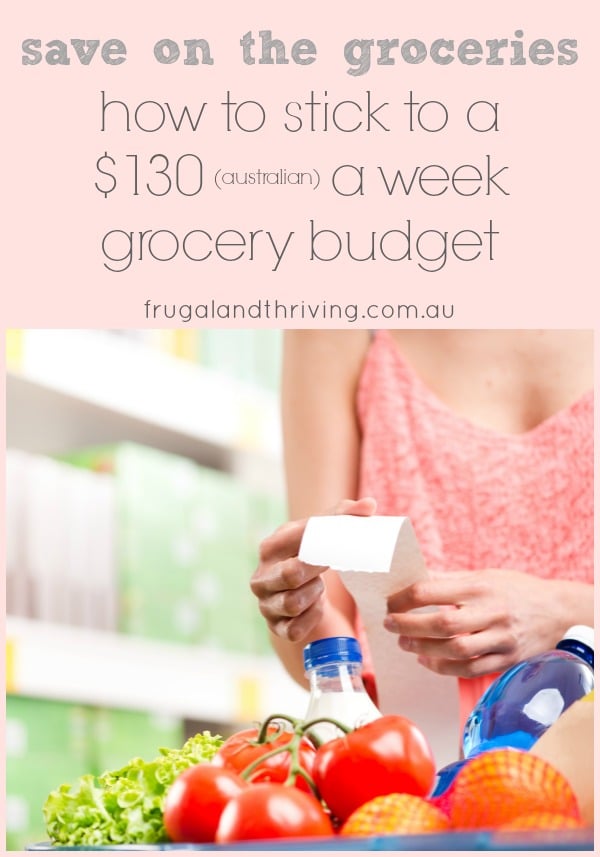


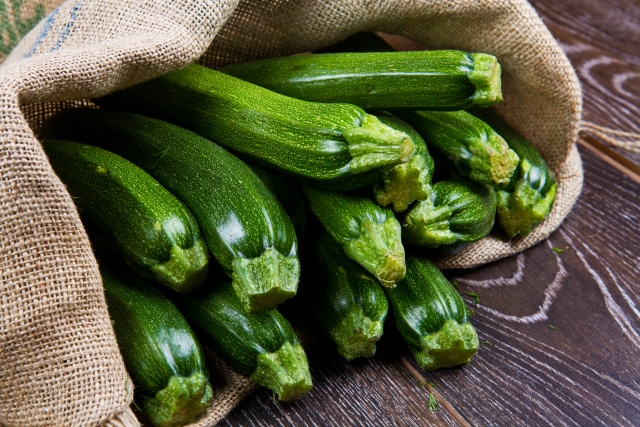

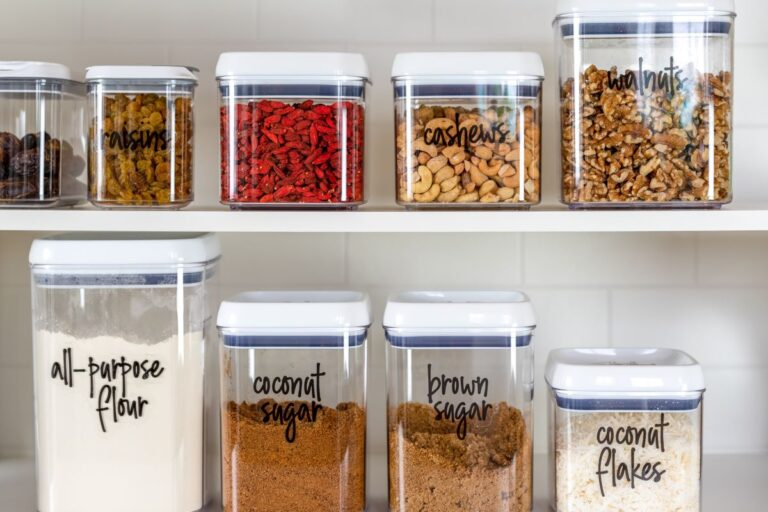
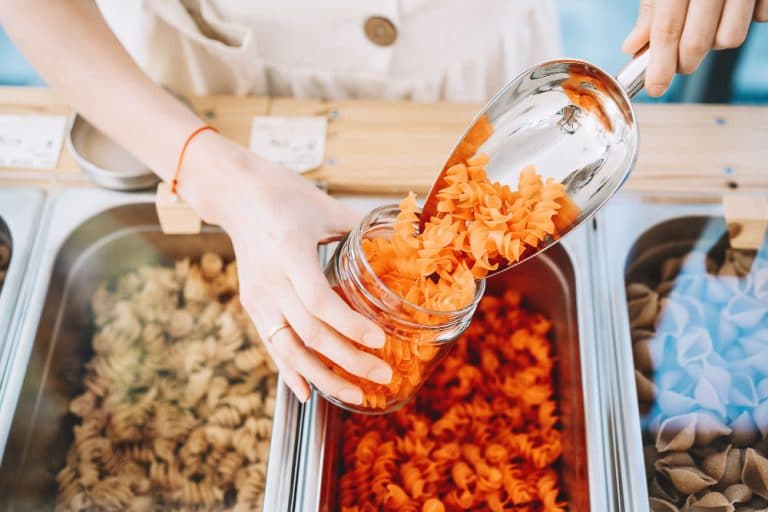
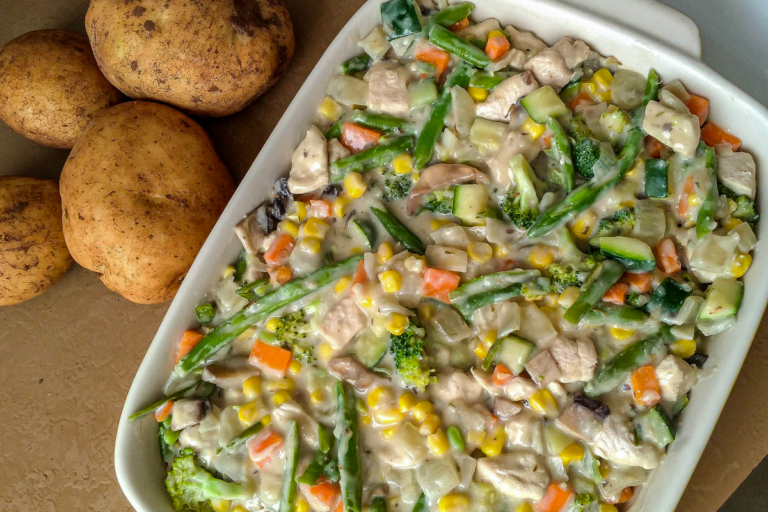
Thanks for this reminder. I am always trying to slash our grocery bill, without success. I know what to do, but don’t do it! Wish I could get to the Vic Markets as our local fruit markets are pretty expensive. When is your new book coming out?
Oh, I can so relate to that sometimes! Love the Vic Markets! Still working on the ebook…slowly. :)
Great post Melissa.I have really been trying this year to make sure we use up everything and then only buy what i know we will eat in the next fortnight.I still havent developed the discipline for menu plans but have found cooking from scratch has ensured we are eating better and saving money.Even my husband has noticed we dont waste as much food now and we have set ourselves a $250 grocery limit per fortnight(3A+1C)which at the moment is working.
Hi Shauna,
Thanks, that’s awesome!
Great Ideas Melissa,
Yes the great “run down the shop buys’ one easy way to empty the purse !.(of course chocolate is a necessity :)
Cooking for two can be awkward most things come in larger quantities.
I always cook a whole bag of rice or pasta and freeze the excess in meal size quantities.
I have even carried the’ freeze the excess’ over to canned as well as fresh food.
You know the half a can of coconut cream , evaporated milk,condenced milk ,tinned corn in the back of the fridge).I always seem to be throwing away tinned corn!
The liquids I freeze in ice cube trays and bag(labelled of course) The corn or anything else in containers.
Home brand have a great sweet and sour sauce Jar(where the pasta sauce is) (less than $2) ,it keeps when opened for at least a week and I use the leftover half a jar (after the S&S Pork and fried rice)to spice up leftovers -when you cook it down to a sweet sticky sauce its great with sausages ,rissoles etc.
I’ve started making croquttes.You make a white sauce type base then add left over meat ,fish,chicken veg let it set -roll into thick sausages egg and breadcrumbs and fry(or oven bake) You can add leftover mashed potato to bulk . You can feed a lot of people with this with little meat or fish.
Ever made scotch eggs? 1 egg and a small amount of sausage mince per person is very filling.
It is possible to eat well on a budget,we have a dog and chooks and a compost heap so little gets wasted areound here,and we also grow some of our own fruit and veg.
Another bonus look out for feral fruit (blackberries or fruiting trees on open land) ,and don’t be shy about asking strangers who may have trees in their yard that don’t appear to be tended (lemons ,apples oranges etc) if they want their fruit- you may be able to swap something.In older residential areas their seem to be a lot of trees even if the original owners have left.
Thanks Eileen, you always share great tips! Your croquettes sound lovely. I have a cookbook from the 30s and they croquette just about everything. Like leftover mac and cheese! I noticed McDonalds did a version of this too :)
Leftover corn = corn fritters. I use the fritter binding batter from the original Australian Womens Weekly cookbook
Chocolate is a food group. I am that woman who buys 10 blocks of Lindt 90 % cocoa ( Coles has it ) and pays $1.94 per bar. My DH loves dark chocolate
Thanks for the tip about HB sweet and sour, have just added to my shopping list
I have teenagers, and pack four lunches so there is no such thing as food waste here. My best tip is marked down meat at the supermarket, we frequently eat meat priced over $20 per kilo simply by buying it when reduced., Dinner tonight is a Turducken, reduced from $23.99 to $13,97
Oh Eileen…love the croquettes idea..will be trying that one out!
A friend told me she makes croquettes out of polenta -same idea- cook add whatever cool shape and crumb .
I forgot before you can make a big batch up and freeze them after they are crumbed.
Allow to come to room temp before frying or baking.I know the filling is already cooked but they need to warm all the way through.
I suppose you could use semolina as the binding agent too.
Could take some experimentation but could be gluten free or egg free(coating) or dairy free(milk in white sauce) as need.
Make smaller bite size pieces for snack or party foods.
Apparently Aldi is coming to Perth soon, I can’t wait! We try to eat organic animal products, which can be really pricey, but I like buying a bit of cheap meat on the bone and making soup with heaps of veggies. Also, a bit like the croquettes mentioned above, I often throw leftover meat and veg into arancini balls. Leftovers cut small + rice + egg + grated cheese, rolled in stale breadcrumbs, baked… always a crowd pleaser and great with a simple salad!
Hi Laura is that raw egg to bind the mixture ?
I should have specified–yes, absolutely!
Yes the markdown is a great thing! I allow $10 for specials ,like multiple buys ,and mark downs each fortnight
And remember you can freeze anything up to its use by date with no worries because the freezing halts deteriation,but defrost and use straight away
I often buy MD meat. you can get trays of 8 sausages in various flavours often reduced to $2.60 in Woolies.The pork ones are nice on the scotch eggs just squeeze the mince out of the skins..
Stir fry meat (beef ,chicken etc.) is great for wraps as well as stir frys .BUT one thing to remember if it is a MD bulk tray separate it before you freeze.You can also cook frozen meat and then refreeze(if you forget to separate). I bought a LARGE rolled shoulder of pork a few weeks ago for less than a small one, cut it into 3 ,cooked one (3 meals for the 2 of us) and froze the other two for Ron (later on):).
Cheese especially the expensive types as mark downs freeze beautifully even mozarella or boccancini
I find bacon goes really salty if frozen
Great tips!
Do you think if I purchase our cereal at Costco – 1kg boxes for $8 – that is still expensive? I have never really thought about cereal being expensive…
I eat traditional oats (plain) and hubby eats either coco pops or nutri grain (both from costco) or aldi’s weet-bix.
I agree re shopping less…gee that makes a huge difference. Shopping at aldi for 90% of our groceries has seen a huge saving too. I only wish their honey was cheaper. It’s expensive at woolies, coles and aldi.
I have never thought about the reusables! I will look into it : )
Thanks for the food for thought
Hi Katie, it’s all relative, but 750g of oats is $1.19 homebrand. And it lasts longer than cereal. And there’s no added sugar and other questionable ingredients. That’s why I prefer it. But if the Costco cereal works for you, that’s great!
Have you checked your local green grocer or health food store for honey? Our greengrocer does the 1kg honey for $8.50. Local raw honey at the health food store is $11 a kilo. Both are way cheaper than what you buy in the supermarket. My friend’s dad has bees and sells his local raw honey for $5.50 a kilo and he sells locally through Gumtree.
I shop online now, plan my meals & then look for the specials of the week. I always buy home brand frozen vegies & chips, bulk loo paper & don’t eat cereal either!
The biggest saving is that I google on line coupons codes for the online shop I do & regularly get free delivery & $20 plus off each shop.
Also if anything turns up not as fresh as I would like I ring customer care & they either credit back the cost of the item or give a voucher. It’s all about planning & re working that list until it’s in your price range
They are some great tips. Thank you for sharing them Crystee. I was going to shop online over the Christmas period (to avoid all the people), but I ended up just doing the groceries at night. Online grocery shopping is so convenient!!